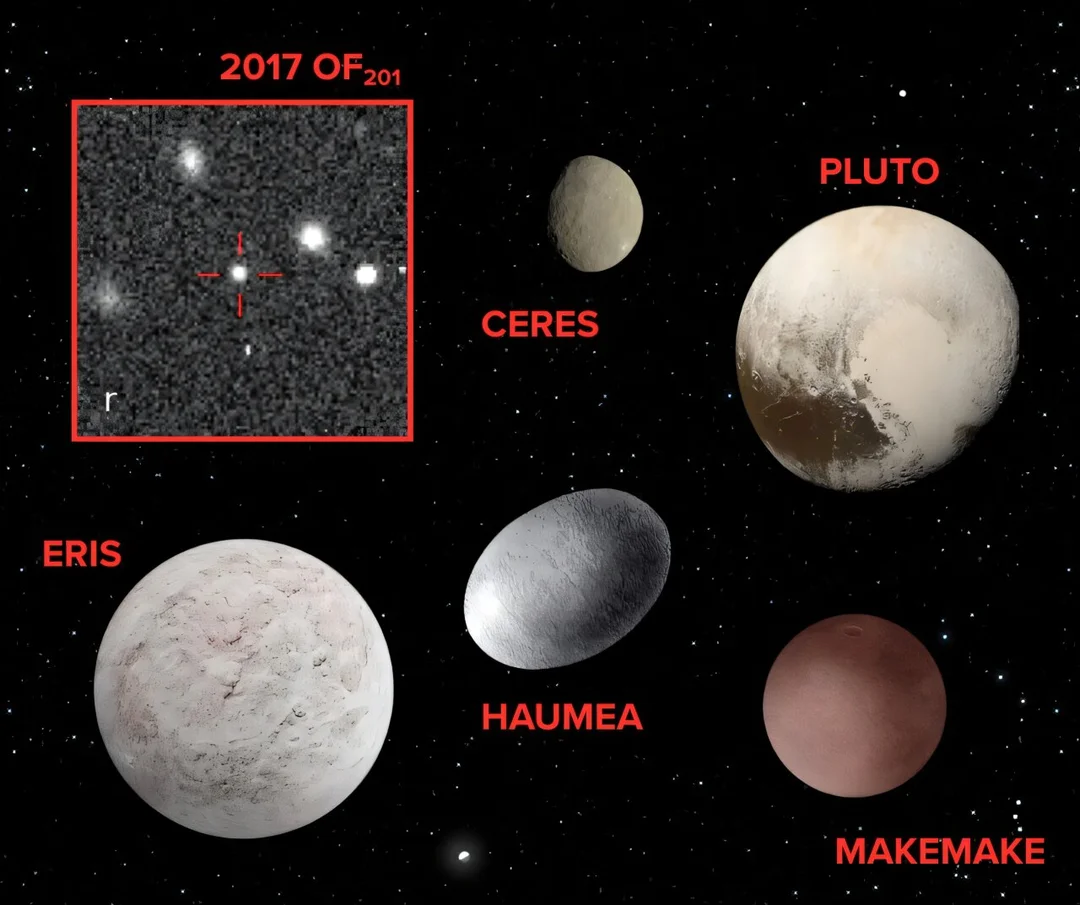
New Dwarf Planet 2017 OF201 Discovered, Challenges Planet Nine Hypothesis
A new member has been added to our solar system: the dwarf planet candidate 2017 OF201. This icy world, discovered by scientists, is located in the outer reaches of our solar system, beyond Neptune. Its peculiar orbit is raising questions about the hypothetical Planet Nine.
Announced by the International Astronomical Union’s Minor Planet Center, the discovery has been published on arXiv. 2017 OF201 is estimated to be approximately 700 kilometers (435 miles) in diameter, which is about one-third the size of Pluto. This makes it large enough to be classified as a dwarf planet.

What makes 2017 OF201 truly remarkable is its extreme orbit. It takes around 25,000 Earth years for the dwarf planet to orbit the Sun. Its closest approach to the Sun (perihelion) is 44.5 astronomical units (AU), similar to Pluto’s orbit, while its farthest point (aphelion) extends to an astounding 1,600 AU. To put this in perspective, Earth's orbit is just 1 AU.
Sihao Cheng from the Institute for Advanced Study, who led the research team, noted, "2017 OF201 spends only 1% of its orbital time close enough to us to be detectable." This suggests that there may be a hundred similar objects residing in the outer solar system, currently undetectable due to their distance.
Intriguingly, the discovery was made using archival data from the Victor M. Blanco Telescope in Chile and the Canada-France-Hawaii Telescope rather than cutting-edge observatories. This highlights how much is yet to be discovered in our cosmic backyard.
The orbit of 2017 OF201 presents a challenge to the Planet 9 hypothesis. Many trans-Neptunian objects (TNOs) exhibit clustered orbits that some scientists attribute to the gravitational influence of a large, unseen planet beyond Pluto. However, 2017 OF201's orbit deviates from this clustering pattern, making it an outlier.
Jiaxuan Li from Princeton University, a co-author of the study, stated, "Many extreme TNOs have orbits that appear to cluster in specific orientations, but 2017 OF201 deviates from this." If more objects like this are found, it could undermine the evidence supporting Planet 9.

Researchers believe that the object's far-flung orbit may be the result of an encounter with a giant planet which ejected it out of the solar system. Simulations of the object’s orbit reveal that it gets ejected from the solar system far quicker with Planet 9 than without it.
The discovery of 2017 OF201 is a testament to the potential for future discoveries with archival data. As Li points out, "All the data we used to identify and characterize this object are archival data that are available to anyone, not only professional astronomers."
The strange orbit of this new dwarf planet candidate not only adds to the richness of our solar system but also poses fundamental questions about its structure and the possible presence, or absence, of Planet Nine. Further observations and analysis will be required in order to understand its origin and interactions fully.
What do you think about the possibility of Planet Nine? Share your thoughts in the comments below.